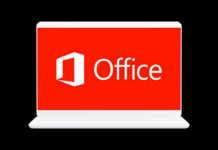There would be to make many assumptions when it comes to Linux, even more, when we speak about the ill of Linux.
There would be to make many assumptions when it comes to Linux, even more, when we speak about the ill of Linux. The one that I want to make is that this writer has been a Linux user for the past, working more than 10 years (with just a couple of years off). Then in approving what will be followed in the article, which essentially is the opinion of another blogger, it does so with the knowledge of the facts that he had addressed those issues.
Also Read: How to Install Linux On Android Phone Without Rooting
In a long post, the European developer Artem S. Tashkinov reported why he believes Linux is not ready for the desktop (and perhaps never will be?). The problems are many and tangible. Among these, we are:
All The Problems That Linux on The Desktop Will Have to Solve
- Many bugs and even regression (also in the kernel)
- Problems with hardware: the frequent updates of components like X.org kernel make it difficult for companies offering Linux support to keep up and not find the convenience of allocating additional resources to do so
- Lack of a standard and a consistent view among the many distributions available
- Lack of cooperation between developers worldwide open source and many “civil wars.”
- Too many updates: in this house, it comes to semi-annual updates of the entire system that some distributions have adopted, making it difficult for users to keep up. Each update may “break” anything and remain in a stable version (LTS) could, however, not guarantee support for new hardware.
- API / ABI unstable
- Software problems: intended as the absence of some essential software and the lack of compatibility with other software platforms.
- Lack of money, motivation, and responsibility
Also Read: How To Install Kali Linux On Any Android
In response early to all those who would answer, “but Linux has always worked well all lies,” the author has prepared a defense wall with some practical examples of where we crashed at least once. These points are printed in much more depth by the author’s blog and are only briefly reported here. It is difficult for anyone who has used Linux on the desktop (in the opposite meaning to the server and not intended as desktop PCs) to have never run into any of these problems.
- No support for hardware graphics acceleration by Flash, Firefox, or Chrome.
- No native support systems NVIDIA Optimus technology and dynamic ATI GPU, now standard in the world of laptops.
- Some bugs using the keyboard (there’s one for the keyboard shortcuts older than 10 years).
- The absence of many of the game’s most famous.
- There is an easy way to install third-party software not included in the repositories of their distro.
- Poor compatibility with documents created with Microsoft Office.
- The absence of many basic app ecosystems Windows / OS X.
- There is an excellent alternative to Windows Network File Sharing.
- Still, too many drivers/software require a configuration from a text file.
- Inability to use/configure many electronic gadgets with your PC.
Also Read: How to Make Linux Bootable Pendrive
Of course, these points are not listed rules which always become true, and one could argue that there are solutions to many of these problems. Still, the reality is that none of these solutions may be acceptable for a user that the computer you want to use only for its need.
At the end of the article, he wants more than anything to give an objective view of what is the current situation of Linux on the desktop and not criticize the party for precise; there are also several positive notes that, in my opinion, help to have a complete picture, but they can not compensate fully what was said so far. Ass I said, I agree with much of what was said in the lengthy post above with the developer, who we ise the first to use Linux on the desktop. Still, to have stopped recommending it to friends and family some years ago, he was unable to solve some of the problems listed above or otherwise unavailable to follow the computers of friends and relatives, as it could even think of doing for mine.



